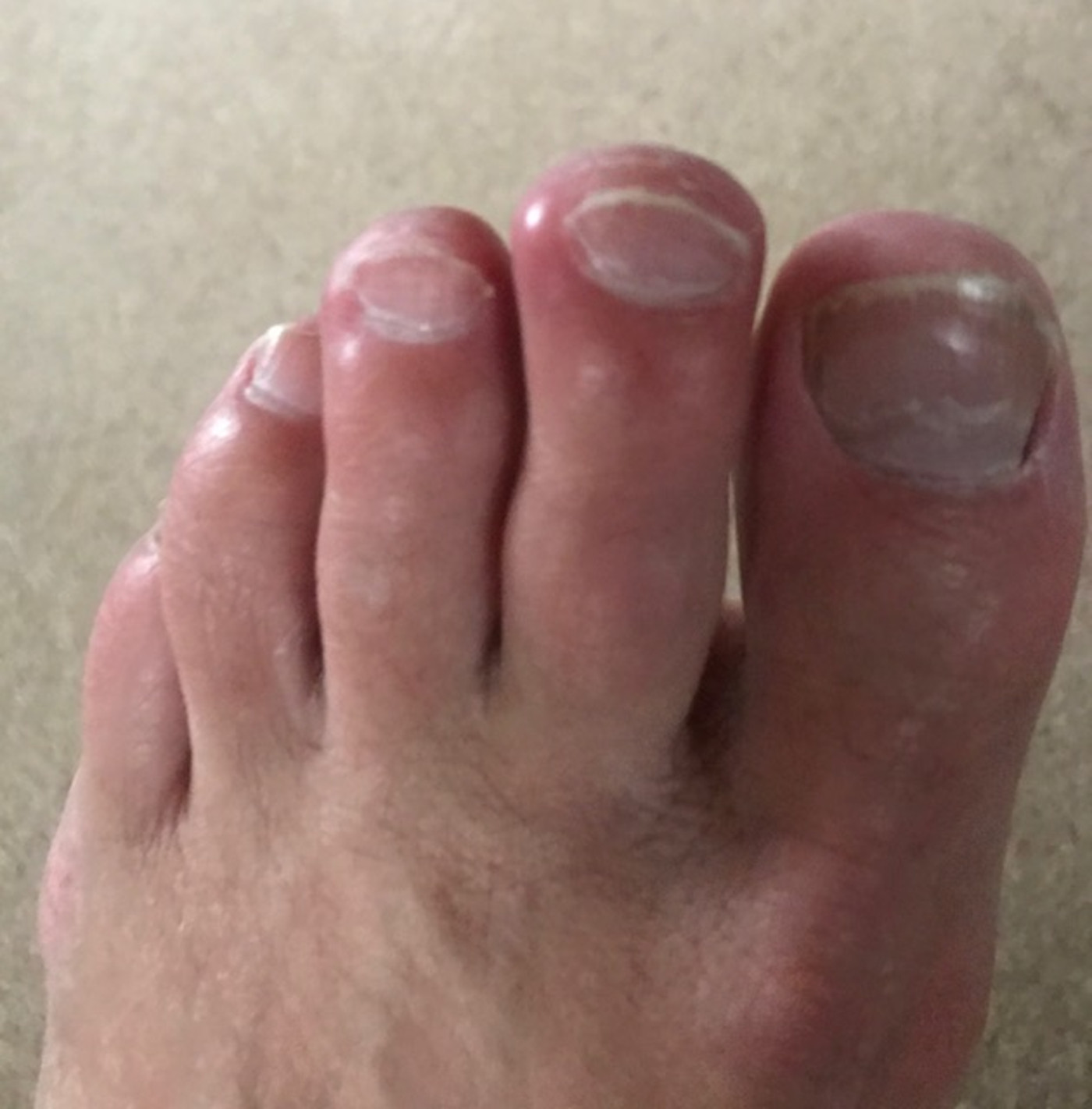
What are Chilblains?
Many people suffer from cold feet in winter, but not all of them develop chilblains. Whether they do or not depends to a large extent on the efficiency of the circulation.
Chilblains are small itchy, red swellings on the skin, which can become increasingly painful, can swell and then dry out leaving cracks in the skin which expose the foot to the risk of infection. They occur on the toes, particularly the smaller ones, fingers, the face, especially the nose, and the lobes of the ears. They can also occur on areas of the feet exposed to pressure, for instance, on a bunion or where the second toe is squeezed by tight shoes.
Chilblains are caused by the skin's abnormal reaction to cold. Damp or draughty conditions, dietary factors and hormonal imbalance can be contributory factors. If the skin is chilled, and is then followed by too rapid warming next to a fire or hot water bottle, chilblains may result.

Who is most at risk?
This condition mainly affects young adults working outdoors in cold places or people who do not wear socks or tights in winter. Elderly people, whose circulation is less efficient that it used to be, people who don't take enough exercise, and those suffering from anaemia, are also susceptible.
What are the symptoms?
With the onset of the cold weather, susceptible people will experience burning and itching on their hands and feet. On going into a warm room, the itching and burning is intensified. There may be some swelling or redness, and in extreme cases, the surface of the skin may break, and sores (ulcers) may develop.
To help prevent chilblains
Keep your body, feet and legs warm, especially if your circulation is poor and your mobility is limited. The whole body, rather the just the feet, needs to be kept warm. Trousers, long boots, tights and leg warmers or long socks will help.
You can also help prevent chilblains if you follow the a regular foot health routine.
If chilblains have developed
Don't scratch them; soothing lotions such as witch hazel or calamine will take away most of the discomfort.
If the chilblain has ulcerated, apply an antiseptic dressing. If you have diabetes or undergoing medical treatment, have the ulcer assessed by your GP or chiropodist/podiatrist.
If the chilblain hasn't broken you can paint them with a mixture of friar's balsam and a weak solution of iodine, which your pharmacist may make up for you, or an over-the-counter preparation. At night, rub some lanolin ointment well into the feet to help retain heat.
© Walkwel Ltd 2025.
Registered in England #08928649
Registered VAT Number: GB121089836
An indicoll website
Privacy PolicyCookie PolicyDisclaimerAccessibility
